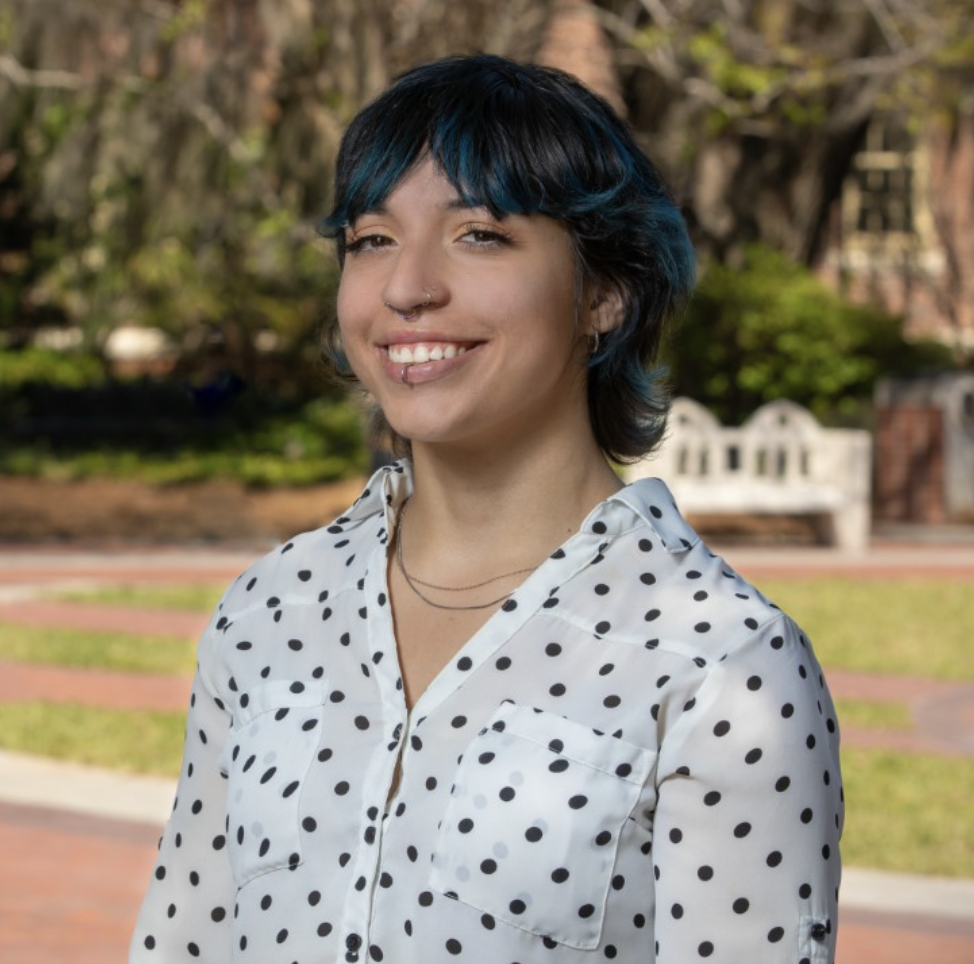Research Symposium
24th annual Undergraduate Research Symposium, April 3, 2024
Ana Pereira Poster Session 1: 9:30 am - 10:30 am /37

BIO
Ana Pereira is a Brazilian-American, 3rd year undergraduate Physics major from Miami, Florida. Their physics discipline of focus is nuclear physics: a field currently focused on addressing the global energy crisis through optimized nuclear energy solutions.
Their research involves analyzing the information related to nuclear structure conveyed by gamma radiation produced during nuclear reactions. They conduct experimental research at FSU under the guidance of Dr. Vandana Tripathi and theoretical research at Brookhaven National Laboratory under Dr. Emanuel Chimanski.
Ana's work conducted at FSU will be presented at the 24th annual research symposium and will be furthered as an Honors-in-the-Major Thesis, with support from the FSU IDEA Grant and Brookhaven National Laboratory’s Office of Educational Programs. Their aspirations include exploring various types of nuclear reactions analyzed through gamma-ray spectroscopy as part of their future research towards obtaining a PhD in Physics at a university renowned for its nuclear physics program. Ana also aims to collaborate with the University of São Paulo’s Institute of Physics through the Fulbright Scholarship during their graduate studies.
Ultimately, Ana envisions a career as a professor at a research university, emphasizing both student mentorship and academic discovery in their teaching and research endeavors.
Spinning out of Control: Exploring Angular Momentum in Nuclear Fission
Authors: Ana Pereira, Dr. Vandana TripathiStudent Major: Physics
Mentor: Dr. Vandana Tripathi
Mentor's Department: Physics Mentor's College: Arts and Sciences Co-Presenters:
Abstract
The process of nuclear fission, discovered in 1938, remains a fundamental area of study in nuclear physics, driven by its implications for both energy production and non-proliferation efforts. Fission, observed in a heavy, neutron-rich nucleus like Uranium-238, involves the rare decay of nuclei into lighter fragments, releasing significant energy in the process. Despite decades of research, understanding the precise mechanism of fission and the correlation of angular momentum in the fragments remains a challenge. In this research, we aim to investigate the relationship between mass and angular momentum distribution of fission fragments, focusing on the induced fission of Actanium-233 formed by the collision of a Bismuth-209 target with a Carbon-14 beam at 75 MeV. Gamma rays from the fragments will be detected and characterized using the FSU gamma-ray array. By comparing the observed gamma rays with known level schemes from the Evaluated Nuclear Structure Data Files (ENSDF) database, fragment pairs such as a Cadmium-116 and Molybdenum-104 were identified. Further angular correlation of the deexciting gammas will allow us to understand the angular momentum correlations in the two fragments and the mechanism of fission. Following the analysis of this reaction, the spontaneous fission of Californium-252 from the ground state will be investigated, comparing the difference in angular momentum and mass fragment distribution of an induced to a spontaneous fission process.
Keywords: Nuclear, Fission, Physics


